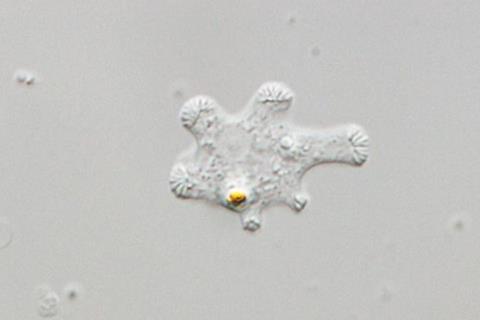Rhabdamoeba marina (R. marina) is a small marine amoeba, first discovered and described in England in 1921.

The amoeboid cells of R. marina, characterized by their near immobility, can produce flagellated cells with two rearward-extending flagella through budding under conditions of prey scarcity.
Despite these distinct characteristics, the taxonomic classification of R. marina has remained unverified because only two cases have been documented, including the original description.
Rare amoeba
Researchers have successfully established a culture strain of R. marina from seawater sourced from the coast of Tottori Prefecture, Japan. Analyzing the genetic sequence of this strain, they found that R. marina does not align with its previously assumed taxonomic group but is closely related to chlorarachnid algae within the phylum Cercozoa. Therefore, the researchers have advocated for the reclassification of R. marina into the class Chlorarachnea.
Through this study, the gene sequence of R. marina - a scarcely encountered and rare amoeba - has been unveiled for the first time, and its phylogenetic position has been clarified. The study highlights the importance of observing environmental samples for the rediscovery of unicellular organisms such as R. marina that lack genetic data.







No comments yet